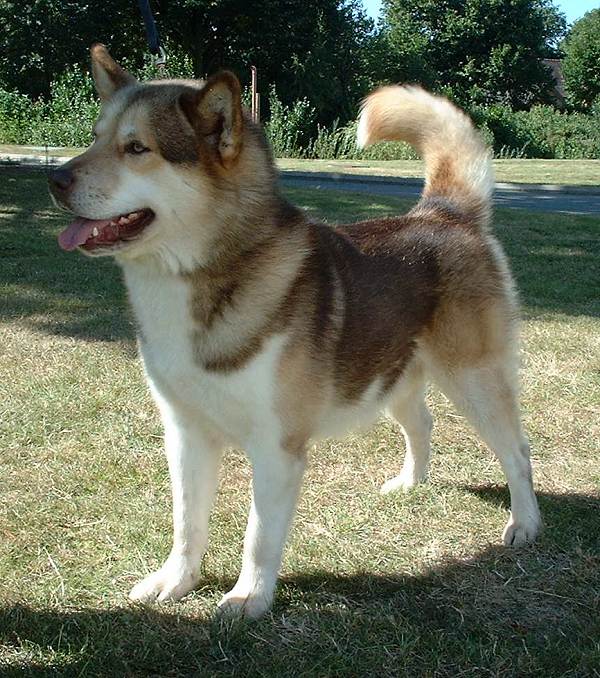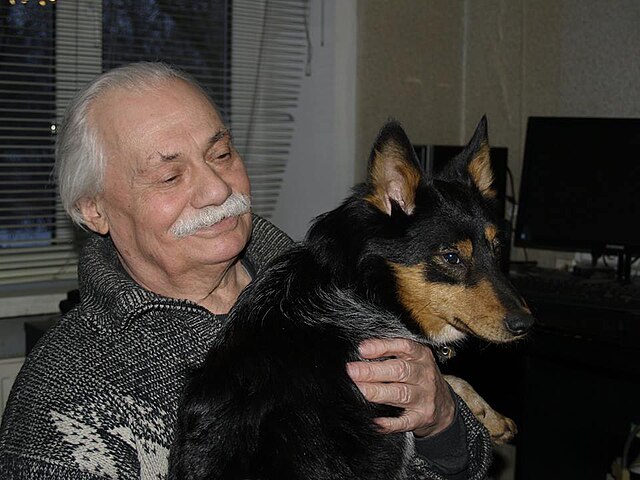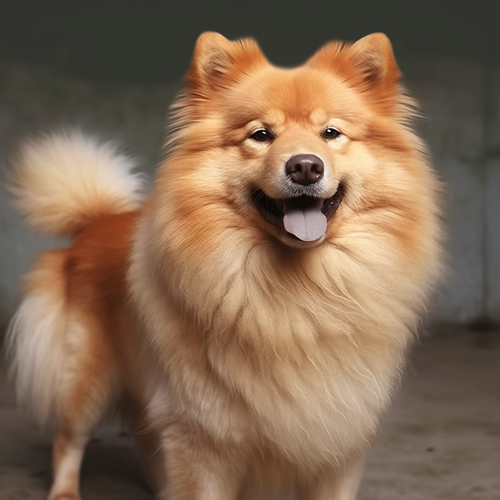The Greenland Dog is said to be one of the oldest breeds in the world. Hailing from the Arctic regions, and the only (surviving) dog from Greenland, this spitz breed is lesser known than similar sled dogs but well favored by those who do. They were originally used by the Eskimos for hunting and pulling sleds and can be said to be a mid-range hauling dog – somewhere in between the sizes of the larger Alaskan Malamute and the smaller Siberian Husky. Although a pack animal, they need to live indoors with the family if they don’t have the company of other dogs. With other household canines, the breed can have issues with members of the same sex unless and until a pecking order is established. Around strange dogs, they can be territorial and defensive. While they might not always start a fight they most definitely will not back down if a scuffle starts.
It is said that one must have plenty of patience when training a Greenland, but because of his size and strength, training is a necessity! He is recommended for experienced dog owners only as he can tend toward dominant behaviors. He needs firm, consistent training throughout his life, but especially during his adolescent years up to the age of 3 when he is most likely to challenge his owner. This is an independent-minded spitz that is intelligent but very stubborn. Aside from the important fact that he needs rules and structure to keep him from taking advantage of his owners, he also needs the mental stimulation that training provides to keep from becoming bored. A dog that was born to do a job – along with obedience training he will be happiest when given activities such as tracking or agility – or even better, opportunities to pull a sled!
Greenlands can be escape artists, and not only do they need a fence but that fence must be equally secure. This means it should be have features that keeps a dog from jumping over as well as digging out. A fenced yard will provide a nice exercise area, however this working breed also needs extensive daily walks – as much as two hours a day for some individuals! Keep in mind this athletic breed would pull sleds for extended periods of time and this energy has not been bred out. He is still capable of this task and owners with the means to do so would do well to let him pull a sled to help release some of that energy! Those not in a snowy climate can substitute carting, or another physically tasking job such as hiking. Without enough physical exercise the dog can become destructive which may result in massive holes dug in the yard or other frustrating behaviors.
The Greenland Dog is a happy and affectionate, non-aggressive breed with a fairly extroverted nature although he has a reserved way of showing it. He loves all members of the family equally and is quick to make friends, yet doesn’t seem to suffer from separation anxiety as frequently as some other social breeds – probably due to his independent side. When playing, he does so boisterously and with much enthusiasm! He is not a guard dog, however is nonetheless intimidating in appearance and can be a deterrent to many would-be buglers who don’t know the difference! The breed is large in height, has a muscular build, and is likely to bark if someone comes to the door; giving many criminals second thoughts.
As might be surmised by his thick, medium length double coat, the Greenland Dog is a shedder and needs to be brushed several times a week. His thick, protective coat allows him to live outside in very cold weather if needed but also means he needs extra protection from the sun and the heat. The top coat is straight and coarse to the touch, providing a protective barrier between his body and the snow (or cold weather) while the plushy undercoat keeps him insulated. This double coat should never be clipped or shaved down, as doing so will ruin the natural ability to insulate him in increment weather. The coat of this colorful spitz can be seen in almost any color, save for albino.
The Greenland doesn’t bark as much as he sings, screams and howls. Groups of Greenlands are known for singing together which results in a beautiful serenade that may or may not impress the neighbors. The ancient roots of this spitz breed certainly show! DNA evidence places them more closely related to the extinct Taimyr Wolf than the Gray Wolf, which is relevant because this means they (and their relatives) are descended from an even older strain of wolf than most other breeds! The breed’s stoic nature, higher prey drive and quiet reserve are all traits often seen in wolves and very ancient dogs.




